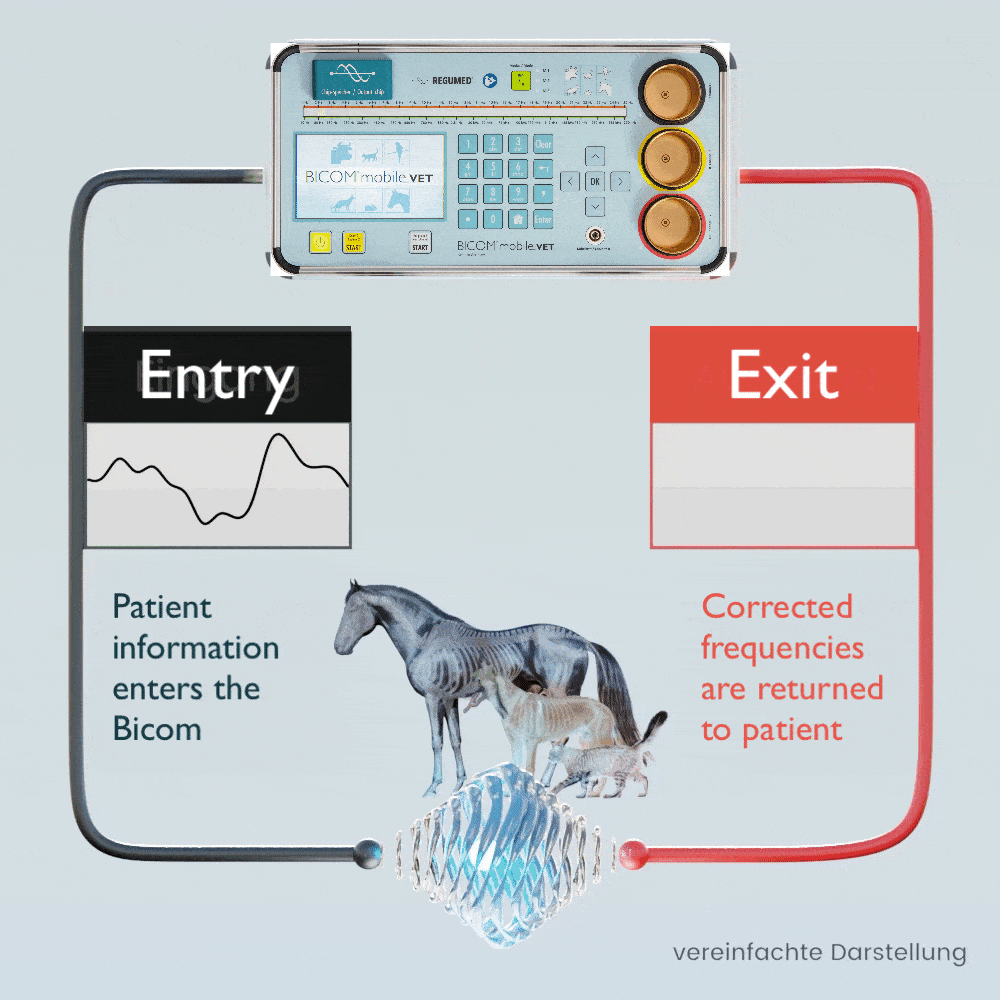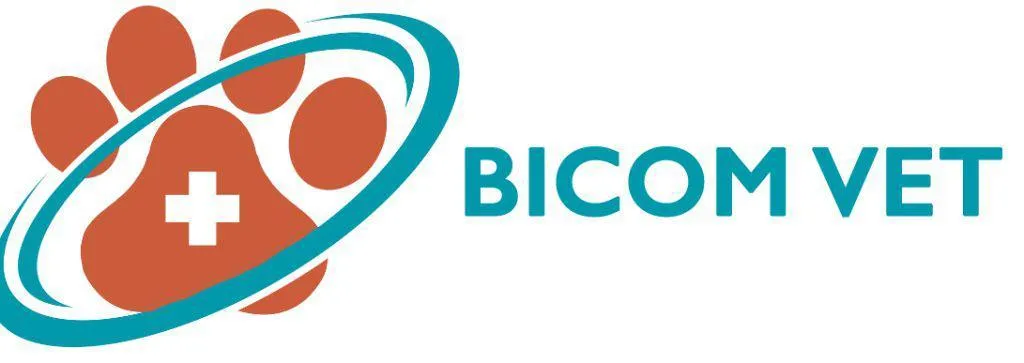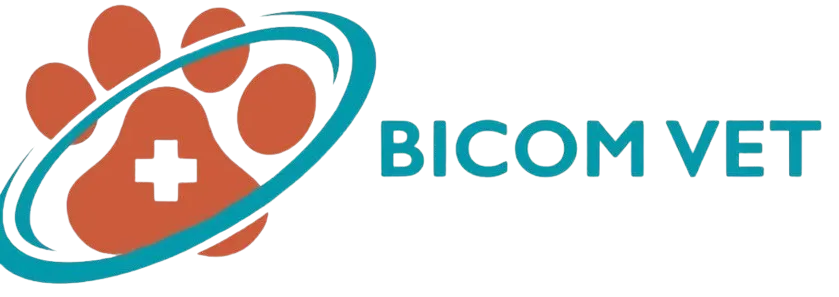Treatment with the help of the patient’s own information
in the BICOM® mobile VET bioresonance device
In contrast to other “frequency therapy devices”, BICOM® bioresonance is a method that is highly individual and perfectly tailored to the needs of the patient through the use of the patient’s own information and the possibility of testing specific wave patterns for resonance.
The patient’s own pathological and physiological information is recorded using special applicators and fed into the BICOM® mobile VET.
Depending on the therapy program, the specific wave pattern as a carrier of information is amplified, weakened or inverted and transmitted back to the patient in modulated form, which means that the transmission of information changes in clarity depending on the modulation or it disappears completely.
The treatment signals continuously adapt to the changing pathological situation of the patient. As the therapy progresses, the body’s ability to regulate is reactivated.
Find out more about this topic at our regular events. Together with veterinarians and animal naturopaths, we offer various face-to-face and online events .
The BICOM® bioresonance method is a cause-oriented, holistic treatment concept. It can narrow down the cause of the health problem in animals and find out even the hidden causes of the clinical picture.
Animals have a natural regulatory system that can also compensate for unusual influences. However, even good self-healing powers eventually reach their limits. Persistent exposure to allergens, environmental toxins, fungi, viruses, bacteria or stress and changed living conditions weaken the immune system and are often the cause of an illness. In particular, fungal infestation on the skin or chronic diseases in general are not always due to a breeding-related genetic defect, but are signs of a disturbed immune system.
The BICOM® bioresonance method is the key to successful diagnosis and therapy, especially for animals that cannot tell us exactly where it hurts or what the symptoms are. It is a gentle form of therapy that can be carried out without side effects and without additional stress for the animal.
The BICOM® mobile VET records the bioenergetic state of the animal, processes the information it contains and returns modified vibrations / therapy frequency patterns to the animal. Symptoms and stress can be diagnosed and targeted therapy can be initiated.
Through the use of endogenous and exogenous substances, the body’s own self-healing powers can be activated and imbalances that have existed for a long time can also be regulated.
REGUMED Medizintechnik are pioneers of the BICOM® bioresonance method. More than 30,000 therapists worldwide, well over 10,000 of them in Germany, successfully use their therapy concept.

Biophysical basics of the bioresonance method
Life is only possible when three conditions are met: matter, energy and information.
We also find these aspects in conventional medicine, both in diagnostics and in therapy. For example, every drug is also a carrier of information.
Information is neither energy nor matter, it is immaterial and comparable to the meaning of a message from a sending to a receiving system.
In addition to the electrical processes in the receptor proteins and biomembranes in general, electromagnetic interactions through light (biophotons) also play a role in cell communication and the transmission of information.
Specific electromagnetic wave patterns act as information carriers. These wave patterns can be modulated by the BICOM® device in order to eliminate disturbing or stressful information in an organism.
The goal is to restore the free flow of healing information (cell communication) and thus support the self-regulation of the organism and the self-healing powers.
Individual, patient-specific information or information from native substances, digitized substances or information stored on storage media can be used for therapy.
What your colleagues are saying…

Bioresonance in Veterinary Cancer Care: A Holistic Approach
The Role of Bioresonance Cancer Treatment in Veterinary Oncology
In recent years, veterinary oncology has seen significant advancements in both traditional and alternative cancer treatments. Among these, bioresonance cancer treatment has emerged as a novel approach aimed at supporting cancer management in animals. In this blog, we will explore the specific role that bioresonance treatment plays in veterinary oncology, focusing on its practical application, potential benefits, and why pet owners are increasingly considering this treatment for their beloved animals.
Understanding Bioresonance Cancer Treatment in Veterinary Oncology
Bioresonance cancer treatment is a non-invasive alternative therapy based on the principle that each cell, organ, and tissue in the body emits electromagnetic frequencies. When an animal develops cancer, it is believed that the frequencies emitted by cancerous cells differ from those of healthy cells. By using a bioresonance device, a veterinarian can supposedly detect these abnormal frequencies and attempt to rebalance them, supporting the animal’s natural healing processes.
In the context of veterinary oncology, bioresonance does not act as a cure for cancer. Instead, it is used as a complementary therapy to improve an animal’s quality of life, assist in pain management, and mitigate the side effects of conventional cancer treatments like chemotherapy and radiation. Veterinary oncologists are gradually integrating this approach into broader treatment plans, offering a more holistic model of cancer care for pets.
The Role of Bioresonance in Early Detection and Diagnosis
While the primary use of bioresonance treatment in veterinary oncology is to support cancer management, some holistic veterinarians believe that it may also play a role in the early detection of cancer. Since bioresonance devices can identify abnormal frequencies, it is suggested that they may be able to detect cancer in its early stages, potentially before physical symptoms appear. Early detection is critical in veterinary oncology, as it can significantly improve treatment outcomes.
However, it's essential to note that bioresonance treatment should not replace standard diagnostic methods like biopsies, ultrasounds, or blood tests. Instead, it may be used as an adjunct to these conventional diagnostic tools, offering additional insight into an animal’s overall health.
Supporting Conventional Cancer Treatments with Bioresonance
One of the primary roles of bioresonance cancer treatment in veterinary oncology is to complement traditional cancer therapies. Treatments like chemotherapy and radiation, while effective, can be extremely taxing on an animal’s body. Pets undergoing these treatments often experience side effects such as fatigue, nausea, loss of appetite, and a weakened immune system.
Bioresonance treatment is believed to support the body’s ability to cope with these side effects by helping restore balance to its energy fields. By addressing the disruptions caused by both the cancer and the aggressive treatments, bioresonance may reduce the severity of these side effects, making the conventional treatments more tolerable for the animal.
Additionally, some veterinarians report that animals receiving bioresonance cancer treatment alongside conventional treatments show improvements in energy levels, mood, and overall vitality. While the therapy itself is not a cure, it plays a vital role in enhancing the pet’s quality of life during their battle with cancer.
Pain Management and Symptom Relief in Veterinary Oncology
Cancer often brings significant pain, particularly as it progresses to more advanced stages. Managing this pain is a critical aspect of veterinary oncology, and bioresonance has shown promise in helping to reduce discomfort in pets.
The electromagnetic frequencies used in bioresonance treatment are thought to stimulate the body’s natural healing processes, reducing inflammation and relieving pain. This is particularly valuable in cases where pain medications alone are insufficient or when they cause unwanted side effects. By integrating bioresonance cancer treatment into the overall care plan, veterinarians aim to provide more comprehensive pain relief, allowing pets to live with greater comfort even as they undergo challenging cancer treatments.
Enhancing Immune Function During Cancer Treatment
Cancer, as well as its treatments, can weaken an animal's immune system, leaving them vulnerable to infections and other health issues. Bioresonance treatment is believed to strengthen the immune system by rebalancing the body’s natural frequencies, helping the pet to better resist illness.
In the context of veterinary oncology, maintaining a strong immune system is vital, particularly for pets undergoing chemotherapy or radiation, which often compromise immune function. By integrating bioresonance into the cancer care plan, veterinarians hope to support the immune system’s ability to fight not only cancer cells but also secondary infections and illnesses that may arise during treatment.
Integrating Bioresonance Cancer Treatment into Holistic Veterinary Care
Veterinary oncology is increasingly embracing integrative approaches that combine conventional and alternative therapies. Bioresonance cancer treatment fits into this model by offering a non-invasive, holistic approach to cancer care. While traditional treatments focus on directly attacking the cancer, bioresonance aims to support the body’s natural healing capabilities, helping to mitigate side effects, reduce pain, and improve overall wellness.
For pet owners seeking a more natural and less invasive cancer treatment option, bioresonance treatment offers a valuable complement to conventional methods. It provides veterinarians with an additional tool to care for pets in a way that considers both the physical and emotional aspects of cancer treatment. While bioresonance alone may not cure cancer, its role in veterinary oncology is to enhance the overall quality of life for animals battling this serious disease.
Conclusion
As the field of veterinary oncology continues to evolve, alternative therapies like bioresonance cancer treatment are playing an increasingly important role. Pet owners are seeking holistic approaches that not only focus on treating the cancer but also support their pets' overall well-being. Bioresonance treatment offers a non-invasive, pain-free option that can help improve the quality of life for animals undergoing cancer treatments.
While scientific research into the effectiveness of bioresonance cancer treatment is still in its early stages, many veterinarians and pet owners are finding value in this therapy as part of an integrative approach to cancer care. The role of bioresonance treatment in veterinary oncology will likely continue to expand as more pet owners seek compassionate, comprehensive care for their pets during their cancer journey.
In conclusion, bioresonance serves as a supportive element in veterinary oncology, particularly in improving quality of life, managing pain, and reducing the side effects of conventional treatments. For pet owners considering this option, it is essential to consult with a qualified veterinarian to ensure that bioresonance is used appropriately within a broader cancer care plan tailored to the pet's individual needs.
Treatment Priorities
For gentle and optimal treatment of the causes of diseases in animals
The BICOM® bioresonance method is predestined for use with large and farm animals such as horses , but also with dogs , cats and small animals. The treatment focus of the BICOM® mobile VET is wide-ranging. It is now used for many indications.
It recognises health deficits at an early stage and is used, among other things, for the following symptoms:
sweet itch
Feed intolerances
allergies and related diseases
COB/COPD
leishmaniasis
Lyme disease
anaplasmosis
lameness in horses
hoof ulcer
Poisoning by poisoned baits, plants etc.
mauke
Feline infectious peritonitis (FIP)
Cat flu/cat disease
eye/conjunctivitis
and much more
Get advice now!
Our experts are happy to be there for you personally
Our BICOM® bioresonance experts are available to answer any questions you may have
and will be happy to advise you personally and individually.




Request more information
Quick Links





Facebook
Instagram
Mail